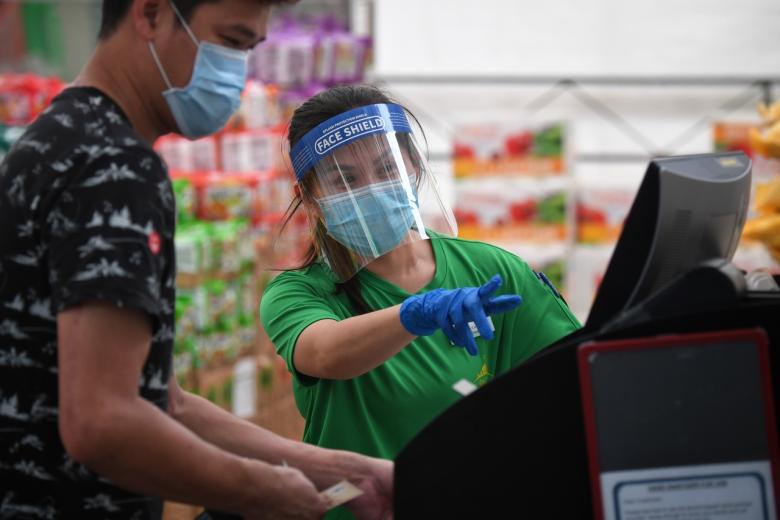According to Ministry of Health (MOH) guidelines updated on May 26, face masks should still be used over face shields in most situations, although both offer adequate basic protection.
MOH said face masks should be used when leaving the home or in situations where it is difficult to ensure safe distancing, such as on public transport.
Face shields, on the other hand, can be used in situations where it is impractical to use a face mask and where safe distancing can be maintained, such as teachers speaking for long periods in front of a class.
They can also be used by individuals with difficulties wearing face masks, such as young children or people with breathing difficulties.
(Note: The Ministry of Health said on June 1 that people should wear face masks, instead of face shields, following a review of an earlier policy in which either option had been allowed. Face shields are allowed only for some, including children 12 years old and below, and in certain settings such as in classrooms.)
FACE MASK
How to use
• Make sure your nose and mouth are covered.
• There should be no gaps between the mask and your face.
How they work
• Protects your nose and mouth from droplets that may contain virus particles.
• Prevents the virus from being spread by a sick person by acting as a barrier.
Pros and cons
• Prevents large infectious droplets from landing on a person's nose and mouth.
• However, airborne aerosols (smaller invisible droplets) can still enter through the gaps.
• There is also a global shortage of surgical masks.
FACE SHIELD
How to use
• Make sure your whole face is covered, from ear to ear and forehead to chin.
• There should be no gaps between the securing headpiece and the plastic shield
How they work
• Protects your eyes and other parts of the face from droplets that may contain virus particles, and prevents the virus from being spread by a sick person by acting as a barrier.
• It also prevents face masks from getting wet.
Pros and cons
• Relatively easy to make and can be cleaned easily.
• A person's face is also fully visible, which some people may prefer.
• However, it lacks a good seal around the face, allowing aerosols to penetrate.
When to use
• All types of masks, including face shields and reusable and homemade masks, offer adequate basic protection for the general public, says the Ministry of Health.
• Plastic spit guards which mainly cover the mouth are not acceptable.
• Surgical masks should be saved for those who need them most, such as healthcare workers.
• Healthcare workers are generally advised to use both face shields and face masks, as their work involves long hours of contact with patients and puts them at a higher risk of infection.
VIRAL DROPLETS
Droplets from coughing and sneezing
• A cough: 3,000 droplets.
• A sneeze: 40,000 droplets.
Droplets from talking and breathing
• An infected person with mild or no symptoms talking in a poorly ventilated space for five minutes can generate as many viral droplets as an infectious cough.
• Commuters should avoid talking on trains and buses.
Aerosols (smaller invisible droplets)
• These micron-sized droplets form a cloud that can linger in the air for minutes before they settle on surfaces.
• It is currently unclear whether Covid-19 can be transmitted through aerosols.
Larger visible droplets
• These fall to the floor within about two metres.
Recommended safe distance
• The US Centres for Disease Control and Prevention recommends safe distancing of two metres based on the assumption that transmission occurs primarily through the larger droplets.
• The World Health Organisation and Singapore's Ministry of Health recommend physical distancing of at least one metre.
Travel range of aerosols
• However, it doesn't mean there are no more droplets beyond two metres.
• Researchers from MIT have observed smaller cough droplets travelling up to five metres and sneeze droplets travelling up to eight metres.
• The travel range of these aerosols suggests that keeping a distance of two metres or more can potentially reduce the possibility of transmission.
Sources: USA Today, New York Times, Ministry of Health, National University Polyclinics, NTUC Health, Parkway Shenton, Alexandra Hospital, Straits Times Graphics











